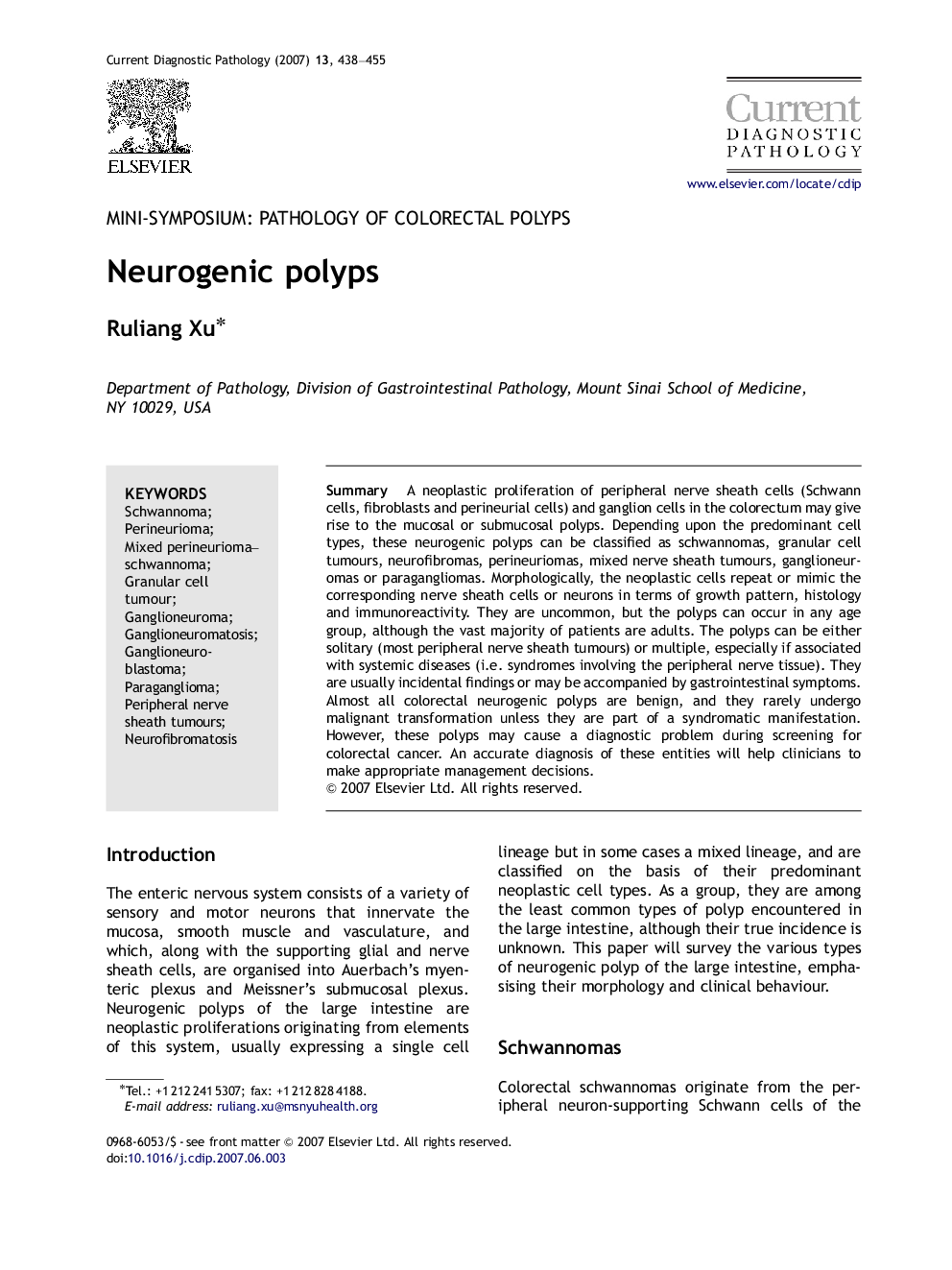| Article ID | Journal | Published Year | Pages | File Type |
|---|---|---|---|---|
| 4130807 | Current Diagnostic Pathology | 2007 | 18 Pages |
SummaryA neoplastic proliferation of peripheral nerve sheath cells (Schwann cells, fibroblasts and perineurial cells) and ganglion cells in the colorectum may give rise to the mucosal or submucosal polyps. Depending upon the predominant cell types, these neurogenic polyps can be classified as schwannomas, granular cell tumours, neurofibromas, perineuriomas, mixed nerve sheath tumours, ganglioneuromas or paragangliomas. Morphologically, the neoplastic cells repeat or mimic the corresponding nerve sheath cells or neurons in terms of growth pattern, histology and immunoreactivity. They are uncommon, but the polyps can occur in any age group, although the vast majority of patients are adults. The polyps can be either solitary (most peripheral nerve sheath tumours) or multiple, especially if associated with systemic diseases (i.e. syndromes involving the peripheral nerve tissue). They are usually incidental findings or may be accompanied by gastrointestinal symptoms. Almost all colorectal neurogenic polyps are benign, and they rarely undergo malignant transformation unless they are part of a syndromatic manifestation. However, these polyps may cause a diagnostic problem during screening for colorectal cancer. An accurate diagnosis of these entities will help clinicians to make appropriate management decisions.
